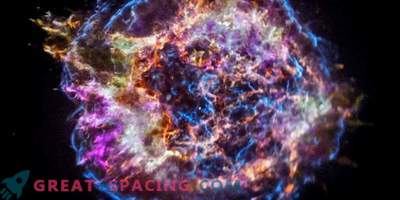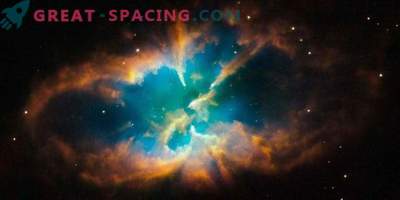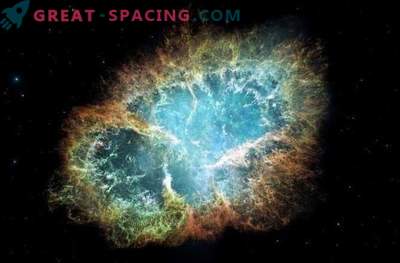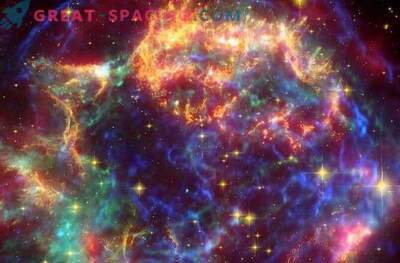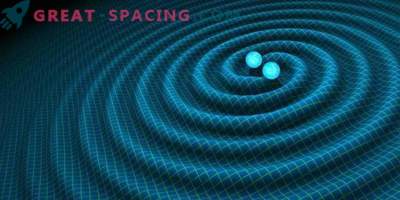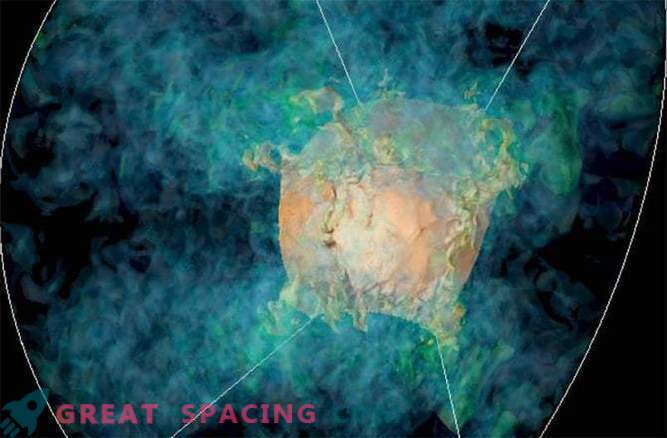
The explosion of supernovae creates heavy elements, a large number of stars, planets and, ultimately, life. These brutal explosions are the basis for everything that we see in the Universe, but for such a fundamental phenomenon we know very little about how and why they explode.
In a new study conducted by an international team of astrophysicists, complex computer modeling was carried out, aimed to recreate the processes occurring inside the supernova. As expected, the dynamics inside the collapsing star is very complex, but this model makes scientists understand what happens to a supernova during an explosion.
In 1987, a supernova (1987A) exploded in the Large Magellanic Cloud, a nearby dwarf galaxy 168,000 light-years from us. This event caused some confusion in the astronomical community. Like many cosmic phenomena, what he saw did not exactly correspond to theoretical expectations. In studying the expanding cloud of supernova debris, astronomers have noticed that the material, recently ejected by the explosion, began to mix with the material that produced the star, which was ejected some time before. This confusion was unexpected, so the theoretical model needed to be revised. The existing model assumes a concentric, in the form of a shell, structure of differentiated elements inside the star, which is about to become a supernova. When a massive star collapses under the action of gravitational contraction (after exhausting its thermonuclear fuel in the core), a huge amount of neutrinos are generated, which quickly draws energy from the interior of the star. This effect of fast compression, accelerates heating.
"This makes it heat up and burn fuel faster, which in turn leads to the creation of even more neutrinos and the process gets out of control," says astrophysicist W. David Arnett from the University of Arizona.
In an attempt to understand this process, astrophysicists turned to supercomputers for help. Often, due to technical constraints, researchers create a one-dimensional or two-dimensional model and can only make assumptions about what will happen in the three-dimensional model. While, the actual process takes place inside the supernova layers.
Arnett, working with Casey Mikin and Nathan Smith of Arizona State University, as well as Maxim Wiallet of Max-Planck Institute for Astrophysics, Germany, developed a complete three-dimensional model of supernova. “We still have concentric circles, with the heaviest elements in the middle and the lightest elements on top. But this happens until someone mixes everything around there,” said Arnett. "As we approach the explosion, we get streams that mix the material together, causing the star to spit out the material until we get an explosion."

Model photographs illustrating the combustion of oxygen in a layered supernova envelope
"What we see in the supernova remnants is the ejection of stellar material before the explosion, mixed with material ejected directly during the explosion. Other models cannot explain this," he said.
With the help of telescopes, such as the Katzman Automatic Imaging Telescope (KAIT) and the Palomar Supernova Factory, watching the stars that are becoming unstable, more facts about the death of the star become available to us.








